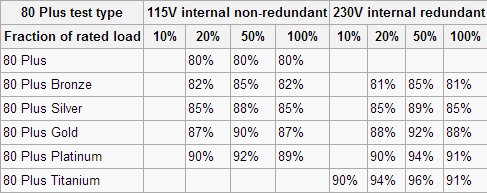Rosewill Glacier 600W Gaming Power Supply Review
Peter Donnell / 8 years ago
Efficiency, PFC and Voltage Regulation
Voltage Regulation
To test voltage regulation we load the power supply to five different load scenarios that give an equal spread of load across every single rail. So that means 20% on all rails, 40% on all rails and so on. We then calculate the average deviance of each rail from its expected voltage.

I’m very happy with these results, although the 12V1 is a little low, it’s pretty consistent across all loads and that should mean stable performance. The other voltages are much better, and all are within a nice margin of error and pretty consistent across all loads.
Power Efficiency
Power efficiency is measured by calculating actual supplied wattage divided by the wattage drawn at the wall/plug, multiplied by 100 to give a percentage. We then compare that to the particular 80 Plus certification the company claims to see if it meets that. You can see the 80 Plus certifications below, we always test 230v power supplies.


The Glacier is rated at 80 Plus Bronze, so should sit between 81% at 20%, and 85% at 50% and 81% again at 100% load, but it beats that out easily with 84, 87, 84, which is but a fraction away from the 80 Plus Silver rating, so very good value for money here!
Power Factor Correction
Power Factor Correction is the ratio of the real power flowing to the load, to the apparent power in the circuit. The aim of PFC is to make the load circuitry that is power factor corrected appear purely resistive (apparent power equal to real power). In this case, the voltage and current are in phase and the reactive power consumption is zero. The closer the number to one the better as this allows the most efficient delivery of electrical power (Source – Wikipedia).

PFC is pretty robust, nothing crazy, but about what we expect from a unit of this power output.



















